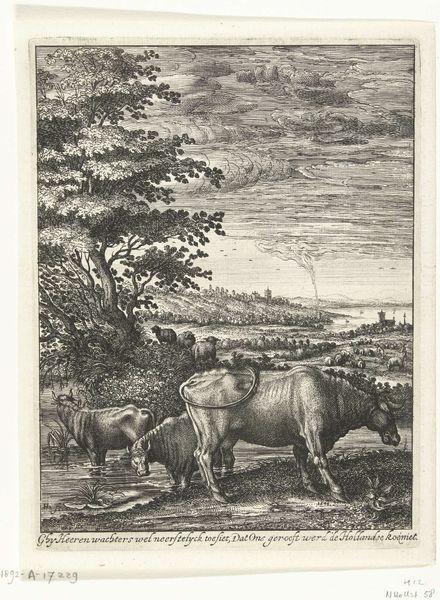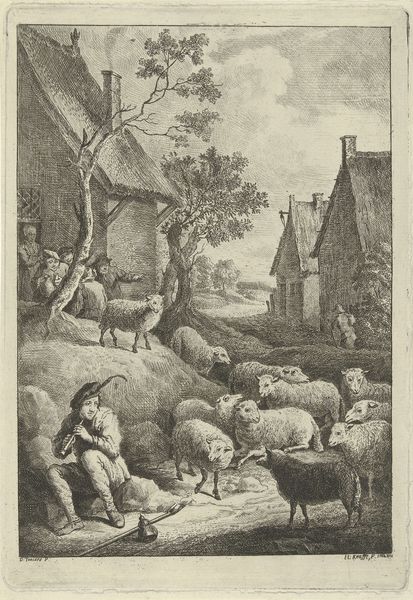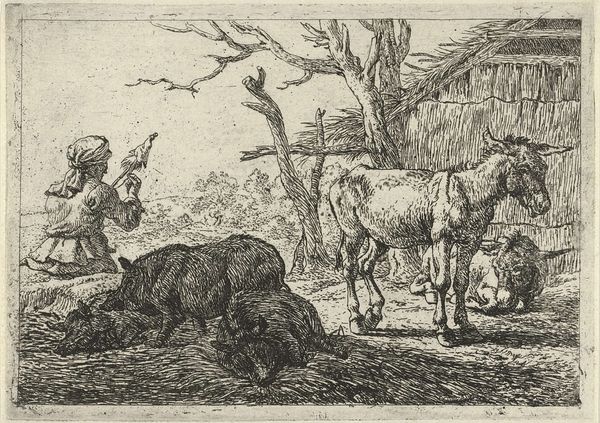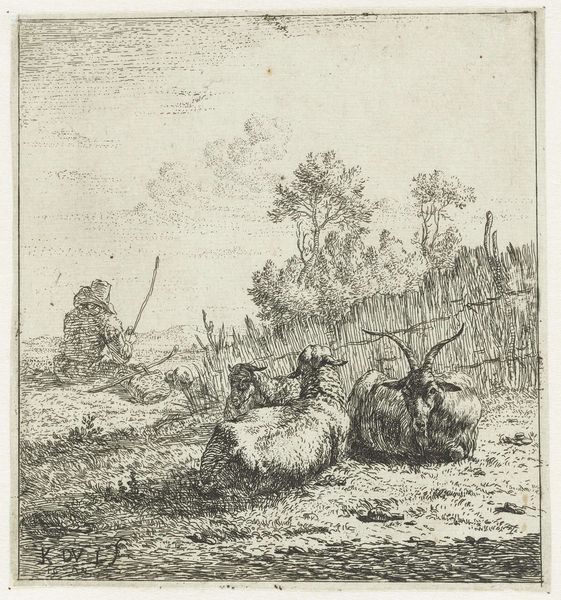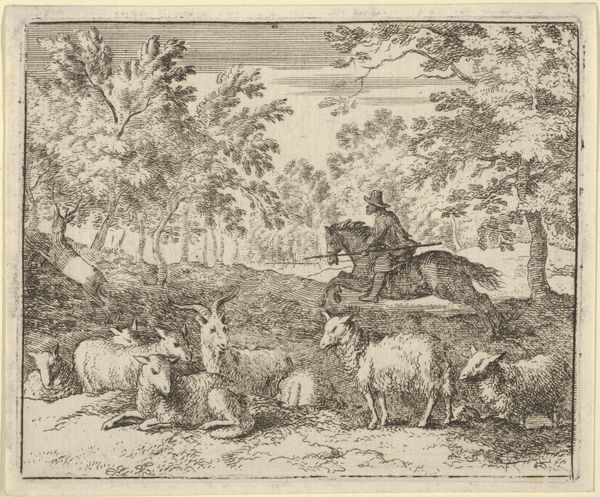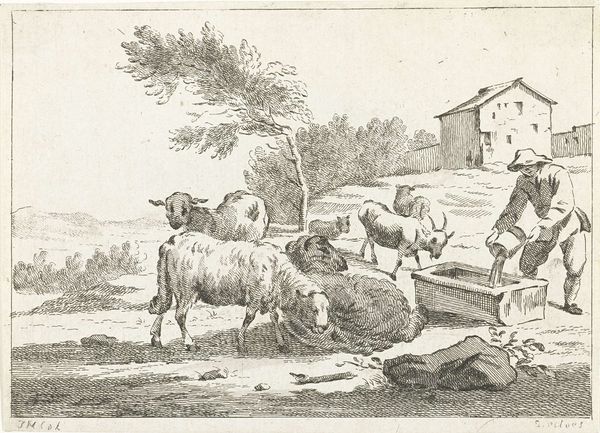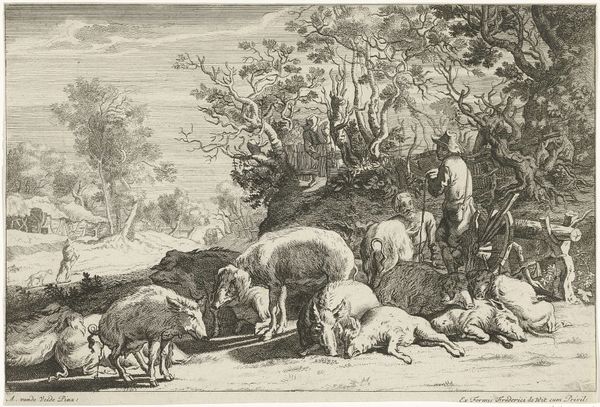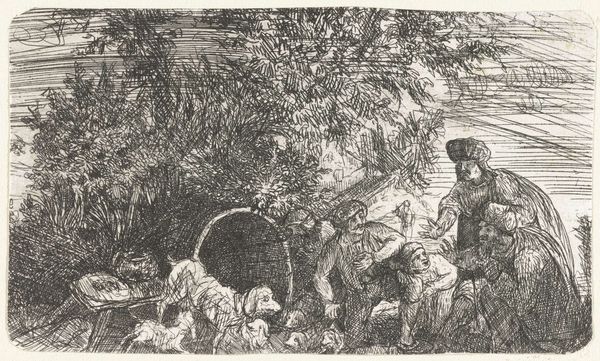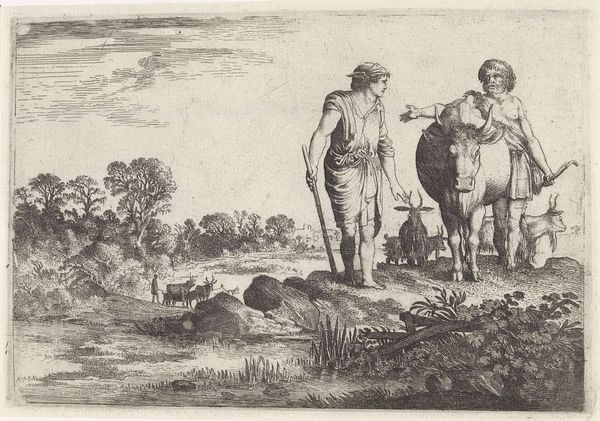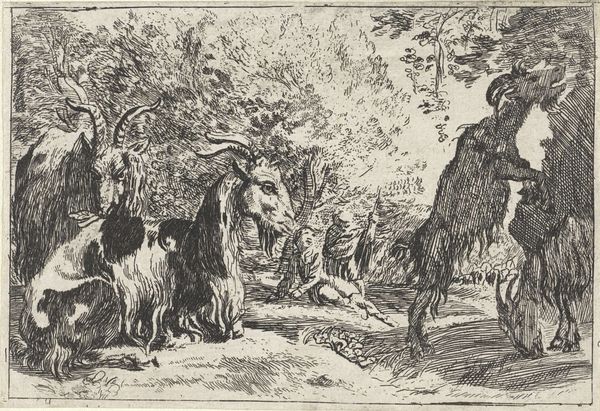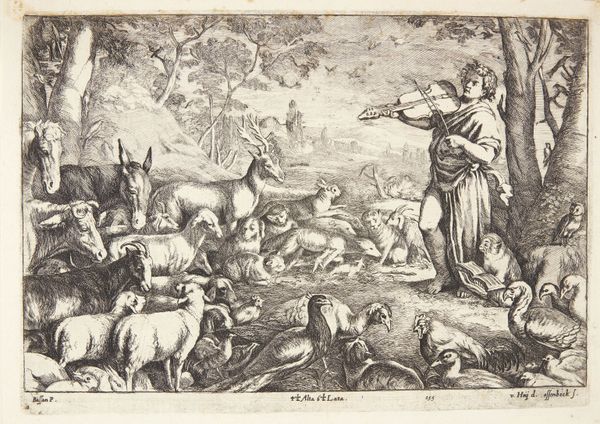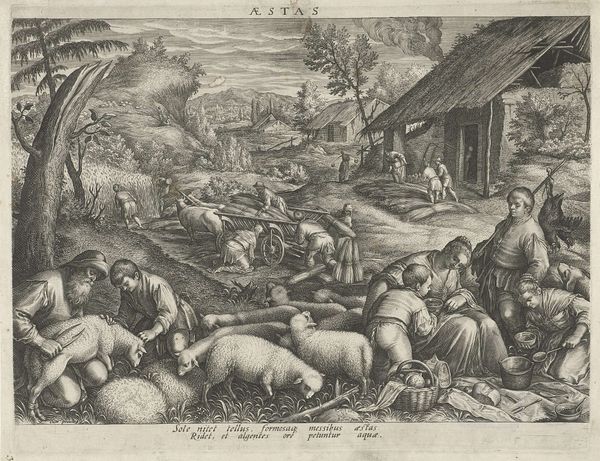
#
quirky sketch
#
pen illustration
#
pen sketch
#
pencil sketch
#
personal sketchbook
#
sketchwork
#
pen-ink sketch
#
pen work
#
sketchbook drawing
#
sketchbook art
Dimensions: height 206 mm, width 157 mm
Copyright: Rijks Museum: Open Domain
Editor: So, this etching, "Landscape with Drinking Jupiter" by Hendrick Hondius I, dates back to 1644. It’s currently housed in the Rijksmuseum. It looks like it’s mostly ink on paper… I'm struck by the strangeness of the composition, all those animals… it's both pastoral and unsettling. What do you see in this piece? Curator: The scene vibrates with potent visual allegories. Hondius anchors the narrative in classical mythology; the infant Jupiter being fed by the goat Amalthea under the watchful eyes of shepherds represents nurture, sustenance, and concealed divinity. Consider, though, what a rural setting would signify to a 17th-century audience—Arcadia, the Golden Age, a world prelapsarian in its abundance. But is it so prelapsarian? Editor: Hmm, I see what you mean… those birds in the sky look ominous. It's almost like paradise is being disrupted, maybe corrupted. The way Jupiter is positioned, suckling like that, feels… vulnerable. Curator: Precisely. Notice how Hondius doesn't merely depict the idyllic surface. He juxtaposes abundance with a hint of disquiet. What might these clustered figures –the goat, Jupiter, the shepherds– remind us of? And how do they connect with our own desires? Editor: Oh! A parallel could be made with the Holy Family. And the idea of desire... is he alluding to the vanity of earthly desires by depicting Jupiter like this, as a helpless baby who would later on become all powerful? Curator: You've articulated it perfectly. These symbols trigger recognition within the collective memory. The artist masterfully interweaves reverence and subtle critique. Editor: I never would have caught all those connections just looking at it myself! Curator: That's the enduring power of art – the more we look, the more we learn. There’s a reason Hondius’ visual vocabulary still speaks to us centuries later.
Comments
No comments
Be the first to comment and join the conversation on the ultimate creative platform.
